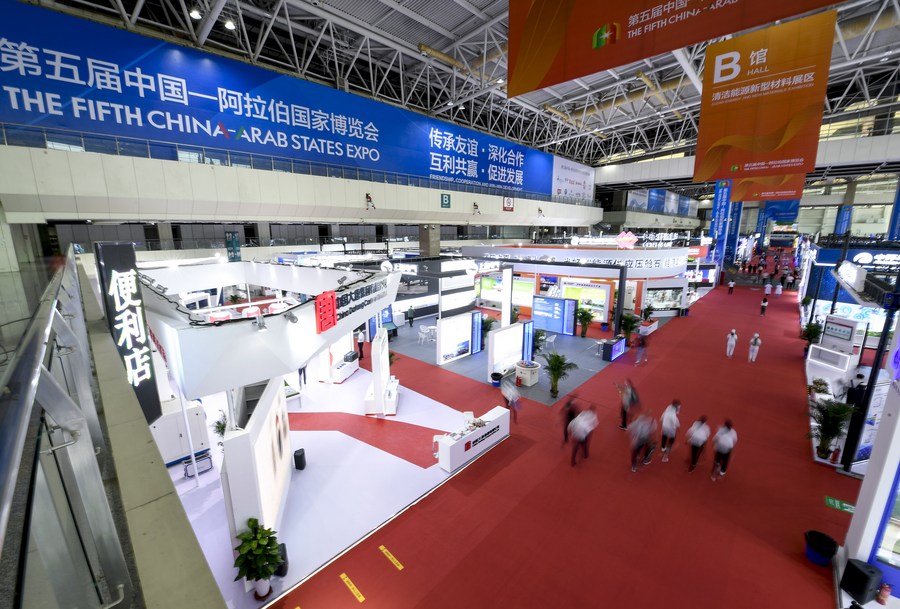Low carbon development diversifies China-Arab energy cooperation
As China and Arab face similar tasks including ensuring energy security, energy cooperation has been highlighted at the ongoing fifth China-Arab States Expo in northwest China's Ningxia Hui Autonomous Region.
While China pledges to achieve a peak in carbon dioxide emissions before 2030 and carbon neutrality before 2060, Arab countries are also actively seeking energy transformation to avoid overreliance on fossil fuels.

As the two sides face similar tasks including ensuring energy security, energy cooperation has been highlighted at the ongoing fifth China-Arab States Expo in northwest China's Ningxia Hui Autonomous Region.
In 2020, Arab countries' crude oil exports to China accounted for 51.3 percent of China's total crude oil imports, making them China's most important source of crude oil imports, said Zhang Jianhua, head of China's National Energy Administration.
Chinese energy companies are also actively participating in power infrastructure construction in Arab countries. The State Grid Corporation of China has participated in a renovation project of Egypt's main power grid. Shanghai Electric took part in constructing a photovoltaic and photothermal hybrid power station in Dubai, he said.
"Over the past two decades we have seen China become the biggest trade partner and strategic external investor for many Arab and Gulf countries, especially in the energy sector," said Awaidha Murshed Ali Murshed Almarar, director of Energy Authority of Abu Dhabi, the United Arab Emirates.
"Now, with the international consensus that we must act to mitigate climate change, scaling up renewable energy adoption has become a global trend," he said.
Official data shows China ranks first globally in newly installed wind-power capacity and is also a global leader in the production and use of solar energy and hydropower.
By the end of 2020, more than 40 percent of China's installed power generation capacity came from renewable resources, supporting nearly one-third of the country's electricity consumption, data from the National Energy Administration showed.
Mohammad Abunayyan, chairman of ACWA POWER, an electricity and water company in Saudi Arabia said their relationship with China started in 2008. "It has been on investment, on Engineering Procurement Construction (EPC) and on equipment supply and services focused at that time in the conventional power. Then we have been able to go to the renewable (energy)."
"China is willing to help Arab states speed up transformation toward low-carbon energy. We will help them develop and utilize wind and solar energy resources based on local conditions," Zhang Jianhua said.

